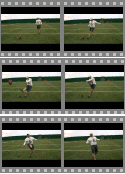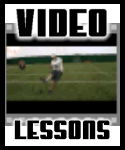|
GUEST EXPERT ARTICLE
As a swing coach, the most important (and most difficult) thing to do is understand each players 'stroke' and know how to diagnose the inconsistencies. The exact mechanics of the punting motion and leg action has to be defined to each and every punter. I try to emphasize the important of balance and the need for one fluid motion. I've found that if the proper posture (neutral hips) is maintained throughout the entire punting motion (catch to kick), the steps, drop and leg snap will follow in harmony.
The following is an analysis of St Louis Rams All-Pro punter Donnie Jones prior to the 2009 season. Since being the first punter in NFL history to average over 50 yds gross and 40 yards net in 2008, Donnie has proven to be one of the premier punters in the NFL. Take note of Donnie's posture and drop preparation (inset). By maintaining this posture and preparing the drop 'out in front', the odds of making solid ball contact are greatly increased.
THE ART OF PUNTING
Rhythm, timing and patience are the key elements required to execute an effective punt. From catch to kick, punting is one fluid motion. After all the work, after all the repetitions, after the mental preparation, we must trust the process while in the heat of battle. A great punt is the product of trusting the process. An 11 yard block point is a product of trusting the process. A 1.2 second “catch to kick” is the product of trusting the process. A punt with 5.0 second hang time is a product of trusting the process. As in all aspects of life, we have to let go in order to gain control. We can’t squeeze it, white knuckle it or force it to happen. We have to let it happen. Less is More - Once a consistent rhythm is minimal physical effort by allowing your lower leg to properly release which will violently snap your foot through the hitting zone established, less effort actually produces better results. We need to take a deep breath, relax, trust the process, and finish.
INTRODUCTION
Field position is one of the key ingredients to winning in the game of football. An effective punter that can change field position is a priceless commodity. The process of punting has four major elements: 1) The Posture/ Body Angle, 2) The Footwork, 3) The Drop and 4) The Leg Snap. Mastering each element will be only made possible by being mentally and physically prepared to compete every time you step on the field. By following faithful daily routines of drill work and conditioning, the punter will be able to repeat the one fluid motion needed to achieve effective hang time, distance and placement.
Maintaining the proper body angle, 'letting your hands work' on the grip, 'letting your get feet into the ground' on the approach, 'floating the drop' to the hitting zone, the patience of 'waiting' on the leg snap and 'finishing' the kick will give you the best chance of becoming an efficient punter.
Due to the aggressive nature of the game of football, patience and timing are skills that are only mastered through mental preparation, repetition and muscle memory. The philosophy of the 'Set and Pull' technique is to maximize foot speed with minimal physical effort by allowing your lower leg to properly release which will violently snap your foot through the hitting zone.
PLAYER ANALYSIS
Donnie Jones is a great athlete with sound flexibility and technique. He has worked exceptionally hard to master the "Set and Pull" technique in order create exceptional leg speed. Donnie's success is directly due to his focus on the process. He has continued to do the work necessary to be consistent mentally as well as physically. After years of snapping his leg properly, he knows what it feels like to do it right . Donnie knows he needs to start his "RHYTHM" as soon as the snap hits his hands. His get-off times are quick and his hang times are consistent because he works the drills daily.
Donnie's make exceptional progress working on the following :
1) "LETTING" YOUR FEET GET INTO THE GROUND - As he receives the snap, start his rhythm - keeping his steps short and behind him on the approach,
2) WORK YOUR HANDS and FLOAT(STICK) IT - adjusting his drop during his approach and floating it outside his left knee with more urgency (keeping it on the 'PRO SIDE'),
3) STAND TALL - by bending at the waist and maintaining his body angle and stable/neutral hips(neutral hips won’t slide),
4) SET IT - setting his leg properly and keeping it set prior to leg snap,
5) GET UP THROUGH IT- integrating his plant leg into the process, pushing off up and through the ball as the kicking leg snaps, and most of all,
6) PATIENCE – WAIT ON IT - waiting on his knee to clear, snapping his lower leg up versus down. On film, he should be snapping his lower leg "up and through" the ball in front of his body vs down/behind his body.
Donnie knows to embrace the drills and workouts as well as really focus on his concentration. Mental toughness is needed to replicate the technique consistently. A good rhythm of 'Catch to Kick' will be needed to be successful in the 1.2 get off range. Starting his consistent rhythm, working his hands effortlessly, setting his leg, letting his feet fall into the ground on approach, floating his drop, and finishing his kicks will be the focus point. Learn more about Greg Montgomery >>> |

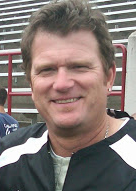 NFL Punting Mechanics and Analysis
NFL Punting Mechanics and Analysis
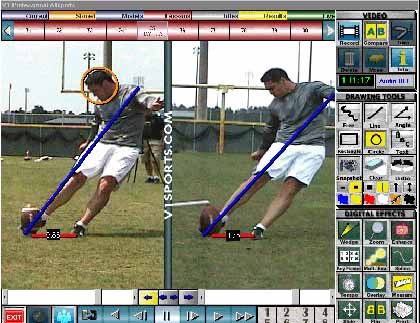
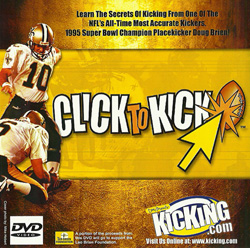
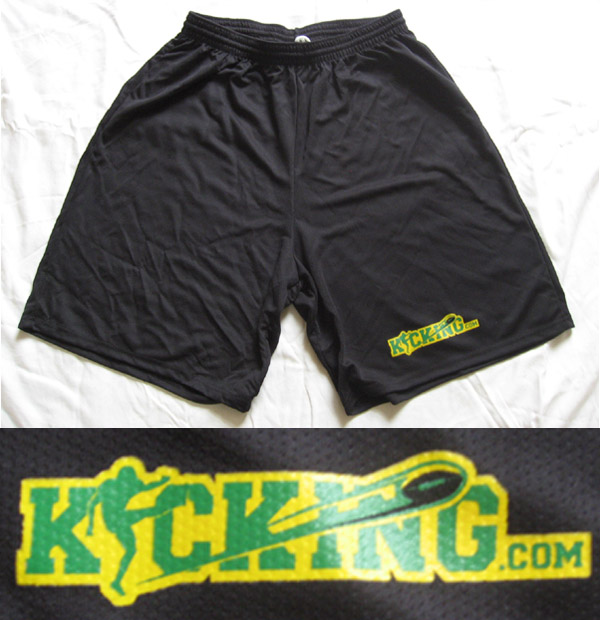
 Doug and Tommy's Frequently Asked Questions
Doug and Tommy's Frequently Asked Questions

